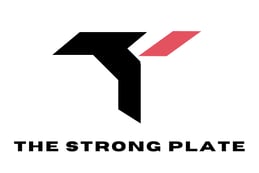How Strength Training Builds Muscle: The Science Behind Gains
Discover how strength training builds muscle through progressive overload, nutrition, and recovery. Learn key strategies to maximise hypertrophy and avoid common mistakes for optimal results.
FITNESS AND NUTRITION SCIENCE
2/23/20253 min read


Strength training is one of the most effective ways to build muscle, enhance physical performance, and improve overall health.
However, many beginners have misconceptions about how muscle growth works, such as fearing they will become "too bulky" or thinking lifting heavier weights alone guarantees results.
In reality, muscle building is a complex process influenced by resistance training, nutrition, and recovery. This guide will break down the science behind hypertrophy, the role of nutrition, and key strategies for maximizing muscle growth.
The Science Behind Muscle Growth (Hypertrophy)
Muscle hypertrophy refers to the process by which muscle fibers increase in size due to resistance training. When you lift weights, your muscle fibers experience microscopic tears. In response, the body repairs and rebuilds these fibers, making them stronger and larger. This adaptation occurs due to progressive overload—gradually increasing resistance or intensity over time. Key factors influencing hypertrophy include training volume, intensity, and consistency.
How Muscles Adapt to Strength Training
Muscles are composed of different fiber types: slow-twitch (Type I) and fast-twitch (Type II). Slow-twitch fibers are endurance-oriented and don't grow as much, while fast-twitch fibers are responsible for strength and power. Strength training primarily targets fast-twitch fibers, leading to greater muscle growth. The adaptation process involves both mechanical tension (lifting heavy weights) and metabolic stress (pushing muscles to fatigue). Recovery is equally important, as muscles grow during rest—not during training.
The Role of Progressive Overload
Progressive overload is the key to continual muscle growth. If you consistently lift the same weight for the same number of reps, your muscles will adapt and stop growing. To trigger further adaptation, you need to gradually increase the demand on your muscles. This can be done by:
Increasing the weight lifted
Adding more reps or sets
Reducing rest time between sets
Improving exercise technique and form
Beginners should start with manageable weights and progressively challenge themselves over time to avoid injury and maximize results.
Nutrition’s Role in Strength Training and Muscle Growth
Training alone isn't enough—nutrition plays a crucial role in muscle development. Protein is the building block of muscle, and consuming enough is essential for recovery and growth. A good rule of thumb is to aim for at least 0.7 to 1.0 grams of protein per pound of body weight.
Carbohydrates provide energy for workouts, while healthy fats support hormone production, including testosterone, which plays a role in muscle building. Pre- and post-workout nutrition also matter—eating a balanced meal with protein and carbs before training enhances performance, while post-workout meals aid recovery.
Training Variables That Influence Muscle Growth
The way you structure your workouts determines your muscle-building potential. Key factors include:
Training Volume: The total number of sets and reps performed (higher volume typically leads to more hypertrophy).
Intensity: The amount of weight lifted (higher intensity with fewer reps improves strength, while moderate intensity with higher reps enhances hypertrophy).
Rest Periods: Shorter rest times (30-60 seconds) create more metabolic stress, while longer rest times (1-3 minutes) allow for heavier lifting.
A well-balanced strength training program incorporates both high-volume, moderate-intensity work for muscle growth and low-rep, high-intensity training for strength gains.
Compound vs. Isolation Exercises: Which is Better?
Both compound and isolation exercises play a role in muscle building:
Compound Exercises (e.g., squats, deadlifts, bench press) work multiple muscle groups and allow you to lift heavier weights, leading to greater overall strength and hypertrophy.
Isolation Exercises (e.g., bicep curls, tricep extensions) focus on specific muscles and are useful for addressing weaknesses and refining muscle definition.
For optimal muscle growth, beginners should prioritize compound movements while incorporating isolation exercises strategically.
The Importance of Recovery and Sleep
Muscles don’t grow in the gym—they grow when you rest. Strength training creates muscle damage, and recovery allows them to rebuild stronger. Sleep plays a critical role, as growth hormone levels peak during deep sleep, promoting muscle repair. Aiming for 7-9 hours of quality sleep per night enhances recovery, reduces cortisol (stress hormone), and maximizes strength gains. Overtraining, on the other hand, can lead to burnout, injuries, and stalled progress, so scheduling rest days is essential.
Common Strength Training Mistakes to Avoid
Many beginners make mistakes that hinder their progress, such as:
Inconsistent training – Skipping workouts leads to slower gains.
Lifting too heavy too soon – Prioritizing form over weight prevents injuries.
Neglecting mobility and warm-ups – Warming up reduces injury risk and improves performance.
Ignoring recovery – Overtraining without rest can cause plateaus.
Avoiding these mistakes and focusing on proper programming will lead to steady muscle growth.
Tracking Progress and Staying Motivated
Tracking your strength training progress helps maintain motivation and ensures you're making gains. Ways to track progress include:
Logging workouts (sets, reps, and weights lifted)
Taking progress photos and body measurements
Monitoring strength improvements in key lifts
When progress slows, consider adjusting your training variables, focusing on proper nutrition, and allowing more recovery time. Staying consistent is the key to long-term success.
Conclusion: Start Building Strength Today
Strength training is one of the most effective ways to build muscle, improve health, and enhance overall fitness. By understanding the science behind hypertrophy, applying progressive overload, prioritizing nutrition and recovery, and avoiding common mistakes, anyone can achieve muscle growth. Start small, stay consistent, and track your progress to see long-term results. Want more fitness and nutrition tips? Subscribe to our newsletter for expert guidance on building strength and optimizing your performance.
Passionate insights on fitness and nutrition topics.
info@thestrongplate.com
© 2024. All rights reserved.


